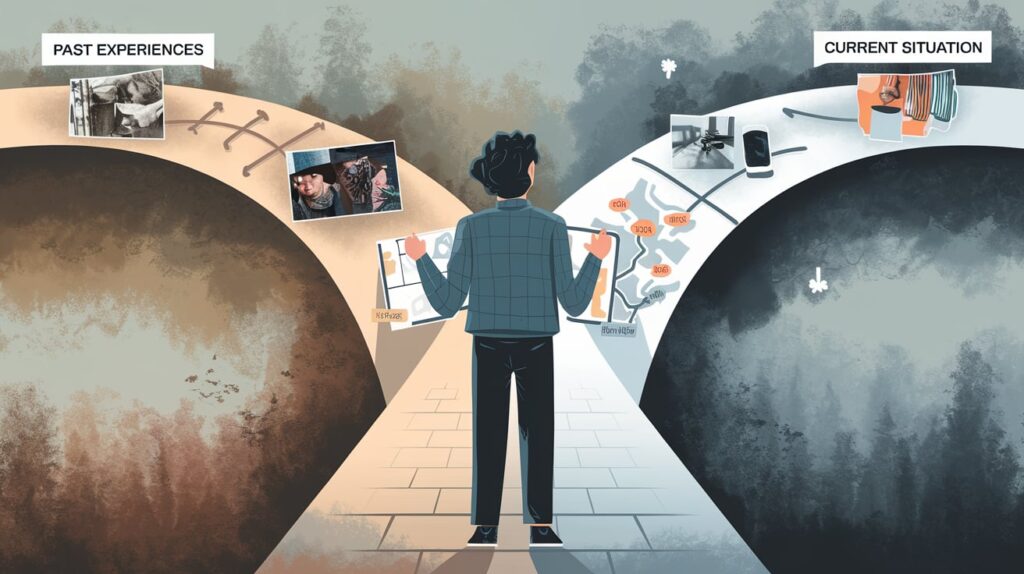In our daily interactions, we often find ourselves curious about the reason for inquiry when someone poses a question. However, constantly repeating “Why do you ask?” can make conversations feel stilted or interrogative.
Luckily, there are numerous alternative phrases and different expressions we can use to grasp background more smoothly. This article will explore ten various methods to express this curiosity, providing practical applications for each.
What to Say Instead of “Why Do You Ask?”
Here are twenty alternative ways to say, “Why do you ask?”:
- What’s the context behind your question?
- Could you share your thoughts on this?
- What sparked your interest in this topic?
- I’m curious about the reason behind your question.
- How does this relate to your current situation?
- May I ask what prompted this inquiry?
- I’d be interested to know the background of your question.
- What led you to ask about this?
- Can you elaborate on why you’re asking?
- Is there a specific reason you’re interested in this?
- What’s driving your interest in this?
- Is there a particular concern behind your question?
- How does this question fit into the bigger picture for you?
- What are your thoughts that led to this question?
- Can you provide some background on why you’re asking?
- What’s the context you’re considering this question in?
- I’m intrigued by your question. What prompted it?
- How does this question relate to your current objectives?
- What insights are you hoping to gain from this inquiry?
- Can you elaborate on the reasoning behind your question?
1. What’s the context behind your question?

This substitute word is perfect for formal situations where you need to understand the broader picture. It’s a polite way to dig deeper without seeming intrusive.
Illustrative scenario (Email in a work environment):
“Dear Marcus,
I noticed your request for the Q3 sales figures. What’s the context behind your question? Knowing this will help me provide the most relevant information for your needs.
Best regards, Samantha”
2. Could you share your thoughts on this?
This synonymous term invites the other person to elaborate, creating a more dialogue constructive atmosphere. It’s particularly useful in business contexts.
Sample usage (In a team meeting):
“You’ve asked about changing our project timeline. Could you share your thoughts on this? Understanding your perspective will help us make a more informed decision.”
3. What sparked your interest in this topic?
Use this phrase when you want to comprehend situation in a more casual setting. It’s great for informal conversations and shows genuine interest.
Real-life situation (At a book club):
“You’re asking about the author’s background. What sparked your interest in this topic? I’d love to hear your take on how it might relate to the story.”
4. I’m curious about the reason behind your question.
This courteous manner of inquiry works well in both personal and professional settings. It’s direct yet polite, perfect for frank discussions.
Contextual demonstration (In a job interview):
“You’ve asked about my experience with remote work. I’m curious about the reason behind your question. Is the company considering a shift to more flexible working arrangements?”
5. How does this relate to your current situation?

This phrase helps in perceiving circumstances more clearly. It’s particularly useful when dealing with personal matters or offering advice.
Practical application (In a mentoring session):
“You’re asking about career change strategies. How does this relate to your current situation? Understanding your specific circumstances will help me offer more tailored advice.”
You can find symbols on various websites that offer symbol libraries. These sites categorize symbols by type, making them easy to browse. Additionally, many word processors and online tools have built-in symbol menus. Simply search for “symbols copy and paste” online to find numerous resources.
6. May I ask what prompted this inquiry?
This respectful approach is ideal for corporate atmospheres where maintaining professionalism is key. It’s a great way to preserve limits while still gathering necessary information.
Sample usage (In a client meeting):
“You’ve expressed interest in our new product line. May I ask what prompted this inquiry? This will help us tailor our presentation to your specific needs.”
7. I’d be interested to know the background of your question.
This tactful method works well in scholarly debates or when discussing complex discussions. It encourages a more in-depth exploration of the topic.
Illustrative scenario (In an academic seminar):
“Your question about the study’s methodology is intriguing. I’d be interested to know the background of your question. Are you considering a similar approach in your research?”
8. What led you to ask about this?
This subtle approach is perfect for delicate subjects or when you want to encourage discussion without being too forward.
Real-life situation (In a counseling session):
“You’ve brought up the topic of family dynamics. What led you to ask about this? Understanding your motivation can help us explore this area more effectively.”
9. Can you elaborate on why you’re asking?
This direct yet considerate style works well in friendly talks where you have an established rapport. It invites honest communication without being confrontational.
Contextual demonstration (In a casual catch-up with a friend):
“You’re asking if I’ve considered moving to a new city. Can you elaborate on why you’re asking? I’m intrigued by what might be behind this question.”
10. Is there a specific reason you’re interested in this?

This diplomatic technique is useful when you want to discern environment or motivation without making assumptions. It’s particularly helpful in occupational scenarios or when dealing with controversial issues.
Sample usage (In a networking event):
“You’ve asked about our company’s sustainability practices. Is there a specific reason you’re interested in this? Your insights could help us understand how we’re perceived in the industry.”
11. What’s driving your interest in this?
This phrase helps in grasping background while maintaining a courteous manner. It’s particularly useful in work environments where understanding motivations is crucial.
Illustrative scenario (In a project planning meeting):
“You’ve suggested we change our approach to client onboarding. What’s driving your interest in this? Your insights could help us improve our processes significantly.”
12. Is there a particular concern behind your question?
This subtle approach is excellent for addressing potential issues without sounding accusatory. It’s ideal for delicate subjects in both personal and professional contexts.
Sample usage (In a parent-teacher conference):
“You’ve asked about Tommy’s interactions with his classmates. Is there a particular concern behind your question? Understanding this will help us address any potential issues more effectively.”
13. How does this question fit into the bigger picture for you?
Use this when you want to comprehend situation more holistically. It’s great for business contexts where understanding the broader implications is important.
Real-life situation (In a strategy meeting):
“You’ve inquired about our competitor’s recent product launch. How does this question fit into the bigger picture for you? This context will help us provide more relevant insights.”
14. What are your thoughts that led to this question?
This alternative phrase encourages the other person to share their thought process, promoting a more dialogue constructive exchange.
Contextual demonstration (In a brainstorming session):
“You’ve proposed a unique solution to our supply chain issues. What are your thoughts that led to this question? Your perspective could open up new avenues we haven’t considered.”
15. Can you provide some background on why you’re asking?
This respectful approach works well in formal situations where you need to gather more information without seeming intrusive.
Practical application (In a job interview):
“You’ve asked about my experience with crisis management. Can you provide some background on why you’re asking? This will help me tailor my response to your specific needs.”
16. What’s the context you’re considering this question in?
This phrase helps in perceiving circumstances more clearly, especially in complex discussions or when dealing with multifaceted issues.
Sample usage (In a legal consultation):
“You’ve inquired about international copyright laws. What’s the context you’re considering this question in? Understanding this will help me provide more targeted advice.”
17. I’m intrigued by your question. What prompted it?
This friendly talk opener shows genuine interest and can lead to a more candid exchange, especially in informal conversation settings.
Illustrative scenario (At a social gathering):
“You’ve asked about my experience living abroad. I’m intrigued by your question. What prompted it? Are you considering an international move yourself?”
18. How does this question relate to your current objectives?
This different expression is particularly useful in occupational scenarios where aligning individual queries with broader goals is important.
Real-life situation (In a career counseling session):
“You’ve asked about opportunities in the tech sector. How does this question relate to your current objectives? This will help me guide you more effectively towards your career goals.”
19. What insights are you hoping to gain from this inquiry?
Use this synonymous term when you want to understand the expected outcomes or goals behind a question. It’s great for scholarly debates or professional development contexts.
Contextual demonstration (In a research seminar):
“Your question about our methodology is interesting. What insights are you hoping to gain from this inquiry? This could lead to a fruitful discussion about research approaches.”
20. Can you elaborate on the reasoning behind your question?

This diplomatic technique invites the other person to share more without feeling pressured. It’s suitable for both personal matters and professional scenarios.
Sample usage (In a team feedback session):
“You’ve suggested changes to our communication protocols. Can you elaborate on the reasoning behind your question? Your perspective could be valuable for improving our team dynamics.”
By incorporating these additional alternative phrases into your communication toolkit, you’ll be even better equipped to navigate various conversational scenarios. Whether you’re in a formal situation or engaged in laid-back exchange, these options allow you to inquire about the motivation behind asking in a way that’s appropriate and encouraging.
Remember, the key is to choose the phrase that best fits the context and your relationship with the person you’re speaking to. In work environments, you might opt for more formal expressions that preserve limits while still inviting open dialogue. In informal conversations, you can use more relaxed phrases that encourage a frank discussion.
By mastering these various methods of asking “Why do you ask?”, you’re not just improving your language skills – you’re enhancing your ability to comprehend situation, discern environment, and engage in more meaningful, productive conversations across all aspects of your life.
The Art of Asking “Why” Differently
Mastering these alternative phrases to “Why do you ask?” can significantly enhance your communication skills. By varying your approach, you can create more interaction optimistic and exchange upbeat experiences in various settings.
In work environments, using these different expressions can help you navigate complex professional relationships. For instance, “What’s the context behind your question?” allows you to gather necessary information while maintaining a courteous manner. This approach is particularly useful when dealing with superiors or clients, as it demonstrates your interest in grasping background without overstepping boundaries.
In more informal conversations, phrases like “What sparked your interest in this topic?” can turn a simple query into an engaging dialogue. This soft method invites the other person to share more, potentially leading to deeper, more meaningful exchanges.
When dealing with delicate subjects or personal matters, opting for a careful technique like “How does this relate to your current situation?” shows empathy and respect. It allows you to uphold restrictions and respect personal space while still offering support or guidance.
Adapting to Different Scenarios
The key to effectively using these substitute words lies in adapting them to specific situations. In a business context, you might lean towards more formal options that preserve limits while still encouraging transparent conversation. For example, “May I ask what prompted this inquiry?” maintains professionalism while inviting elaboration.
In relaxed discussions with friends or family, you can opt for more casual synonymous terms. “Can you elaborate on why you’re asking?” feels natural in an easygoing dialogue and promotes candid exchange.
When navigating controversial issues or complex discussions, choose phrases that encourage frank discussion without putting the other person on the defensive. “I’d be interested to know the background of your question” invites a more nuanced exploration of the topic at hand.
The Importance of Tone and Body Language
Remember, it’s not just about the words you choose, but how you say them. Your tone and body language play crucial roles in how your inquiry is perceived. A genuinely curious tone coupled with open body language can turn a potentially awkward question into an invitation for dialogue constructive interaction.
In formal situations, maintain a professional demeanor while using these phrases. In more laid-back exchanges, a friendly smile and relaxed posture can complement your choice of words, making the conversation flow more naturally.

Conclusion: Enhancing Communication Through Thoughtful Inquiry
By expanding your repertoire of ways to ask “Why do you ask?”, you’re not just varying your language – you’re opening doors to more meaningful and productive conversations. These various methods allow you to discern environment, comprehend situation, and perceive circumstances more effectively across a wide range of scenarios.
Whether you’re in a corporate atmosphere, engaged in scholarly debates, or enjoying friendly talks, these alternative phrases provide tools to navigate curiosity with grace and tact. They help you establish guidelines for respectful inquiry while encouraging open communication.
Remember, the goal is to create an atmosphere where questions lead to understanding, not defensiveness. By choosing the right phrase for the right moment, you can turn simple queries into opportunities for deeper connection and more frank discussion.
So, the next time you find yourself wanting to ask “Why do you ask?”, pause and consider: which of these alternative phrases might best serve the situation? Your thoughtful approach could be the key to unlocking a more transparent conversation and fostering a truly dialogue constructive exchange.





